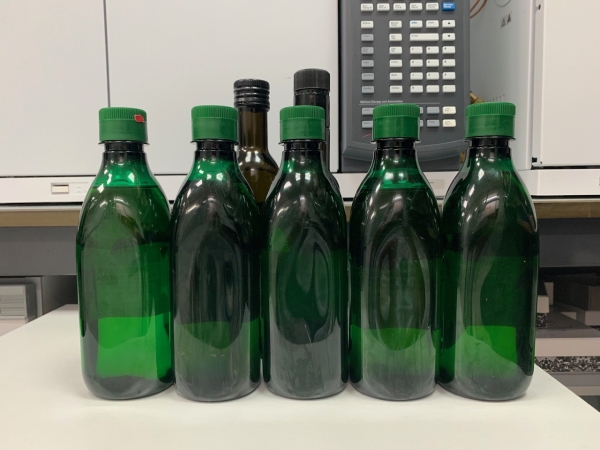Spain is the largest producer and exporter of olive oil worldwide. Therefore, this product's importance for the national economy, and even more so for the Andalusian one, is indisputable. In this regards, projects like the European Union's Interreg-Med Programme's Aristoil project are especially valuable, for their study of components that bolster the olive oil industry's competitiveness.
One of these components are polyphenols, vital compounds in virgin olive oil that contribute to its healthy and antioxidant properties and to the creation of a barrier against cardiovascular diseases. The Aristoil research project, in which the University of Cordoba (UCO) has participated, has studied more than 3,000 samples from producers over three seasons, concluding that a high proportion of them stand out for their phenolic content. The most important factors affecting phenolic content include the variety, harvesting, and the prioritization of the production of EVOO (Extra Virgin Olive Oil). All this gave rise to a set of 10 guidelines setting forth the practices that help to boost the phenolic content in the oil.
Phenolic content is not a determinant of the quality of the oil, but it is a differentiator that can provide added value in terms of its healthy properties. "They are minority compounds found exclusively in AOV (Virgin Olive Oil) and EVOO", explains Professor Feliciano Priego, head of the project at the UCO. The importance of characterizing these phenols, precisely, lies in the fact that they are the only component of virgin olive oil that has specifically and officially been recognised as healthy, by European Regulation 432/2012, endorsed by the European Food Safety Authority (EFSA). This statement can be used on the label provided that the product has a phenolic compound content greater than 250 mg/kg, which is a valuable advantage for its commercialization.
"There are many producers who have participated in the project because, in exchange, they received a free certificate attesting to the phenolic content of their oil," adds Priego. This is especially important to exporters, as in many countries they are asked for a report with analytics, to evaluate it. In fact, some of these growers have made modifications at the process level in order to bolster the phenolic content of their products.
The Aristoil project, in which five Mediterranean olive oil producing countries participated - Greece, Cyprus, Croatia and Italy, as well as Spain - has also conducted research into when and how the oil loses its healthy properties, something that is shaped by the product's initial phenolic profile. "Oil is a 'living' product, and we have been able to verify that there is a phenolic drop of between 40 and 80% over the first 12 months after its production", indicates the principal investigator on the project at the UCO, who also points out that "there are certain oils that are more likely to be healthier for longer”.
The project also stressed transfer to producers, who were explained the importance of these phenols in the quality and competitiveness of the product, and the aspects that make it possible to produce healthy extra virgin olive oil.
The Aristoil project - "Enforcement of Mediterranean olive oil sector competitiveness through the development and application of innovative production and quality control methodologies related to olive oil health protecting properties" (INTERREG-MED-1033) - was financed by the European Union through the Interreg-Med call.
"This report is part of the project “CONSOLIDA-UCO ECT2020-000810", funded by MCIN/AEI/10.13039/501100011033 and by European Union “NextGenerationEU”/PRTR”.


